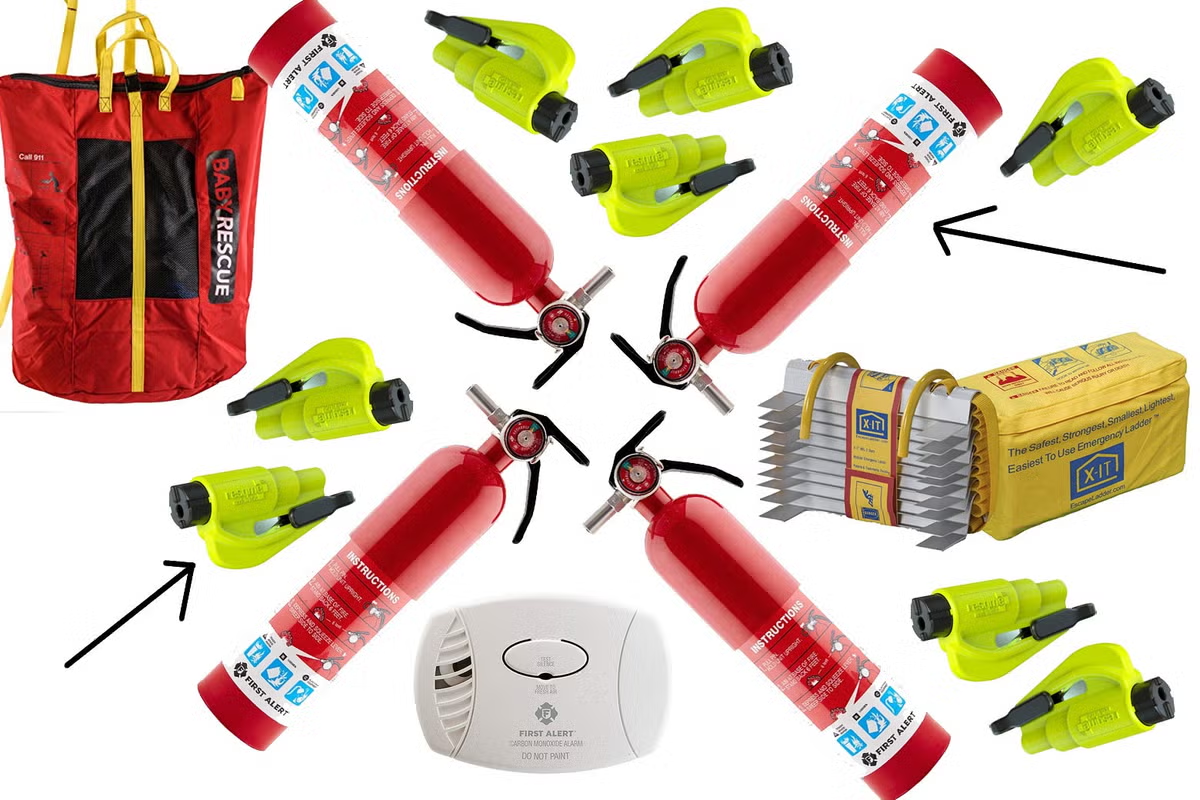Home safety is a paramount concern for homeowners and renters alike. Ensuring that your living space is secure involves more than just locking doors and windows. It requires a holistic approach that includes various safety tools and measures to protect against potential hazards such as fires, break-ins, and accidents. This comprehensive guide explores the essential home safety tools you need and how to effectively use them to create a safer living environment.
Smoke and Carbon Monoxide Detectors
One of the most critical safety tools in any home is the smoke detector. Smoke detectors are designed to alert you to the presence of smoke, which is often an early indicator of fire. They should be installed in every bedroom, outside sleeping areas, and on every level of the home, including the basement. It’s crucial to test these devices monthly and replace the batteries at least once a year to ensure they are functioning correctly.
Similarly, carbon monoxide detectors are essential, especially for homes with fuel-burning appliances like gas stoves, fireplaces, and furnaces. Carbon monoxide is a colorless, odorless gas that can be deadly. These detectors should be placed near bedrooms and on each level of the home. Regular testing and battery replacements are also necessary for these devices.
Fire Extinguishers
Fire extinguishers are another vital component of home safety. They can prevent small fires from becoming major disasters. It is recommended to have a fire extinguisher in key areas of the home such as the kitchen, garage, and near any potential fire hazards. Learning how to use a fire extinguisher properly is crucial; remember the acronym PASS: Pull the pin, Aim low, Squeeze the handle, and Sweep from side to side.
In addition to having fire extinguishers readily available, it is important to regularly check their pressure levels and ensure they are in working condition. For those who already have fire extinguishers, don’t forget about the importance of fire extinguisher refills. Over time, extinguishers can lose their charge or become ineffective, so regular maintenance and refilling are essential to ensure they are always ready to use.
Security Systems
Modern security systems offer a wide range of features designed to protect your home from intruders. These systems often include alarms, surveillance cameras, motion sensors, and smart locks. Installing a comprehensive security system can provide peace of mind and deter potential burglars.
When selecting a security system, consider one that integrates with your smartphone, allowing you to monitor your home remotely. Some advanced systems also offer features like facial recognition, automated alerts, and emergency response coordination.
First Aid Kits
Accidents can happen anytime, and having a well-stocked first aid kit can make a significant difference in handling minor injuries and emergencies. Your first aid kit should include bandages, antiseptics, pain relievers, gauze, adhesive tape, scissors, tweezers, and an emergency blanket. Additionally, consider including items specific to your family’s needs, such as allergy medications or an epi-pen.
Place first aid kits in easily accessible locations, such as the kitchen, bathrooms, and vehicles. Regularly check the contents to ensure nothing is expired or depleted.
Emergency Lighting
Power outages can occur without warning, making it essential to have emergency lighting solutions. Flashlights, battery-powered lanterns, and candles are practical options. Ensure that flashlights and lanterns have fresh batteries and are easily accessible in case of an emergency.
Additionally, consider investing in a few strategically placed nightlights that turn on automatically during a power outage. These can provide essential illumination and help prevent accidents in the dark.
Escape Ladders
For multi-story homes, escape ladders are a critical safety tool. These ladders provide a means of egress from upper floors in the event of a fire or other emergencies when the main exit is not accessible. Store escape ladders in bedrooms or other high-traffic areas where they can be quickly deployed if needed.
Practice using the escape ladders with your family to ensure everyone is familiar with their operation. Regular drills can help ensure that everyone knows what to do in an emergency.
Childproofing Tools
If you have young children, childproofing your home is essential. Items such as safety gates, outlet covers, cabinet locks, and corner guards can prevent accidents and injuries. Secure heavy furniture and appliances to the wall to prevent tipping, and ensure that potentially dangerous items are out of reach.
Conclusion
Creating a safe home environment involves careful planning and the right tools. From smoke detectors to first aid kits, each component plays a crucial role in protecting your family and property. Regular maintenance and updates to your safety tools are essential to ensure they remain effective. By investing in these home safety tools and educating your family on their proper use, you can significantly reduce the risk of accidents and enhance the overall security of your home.


